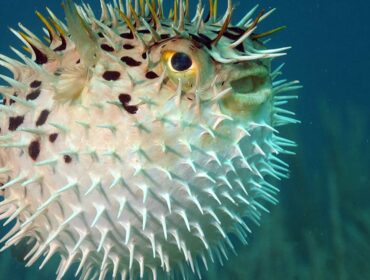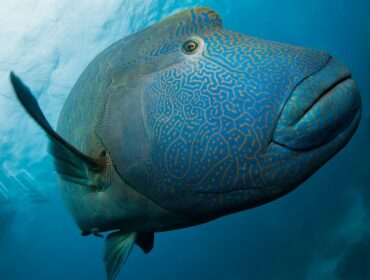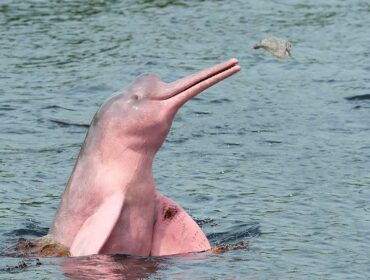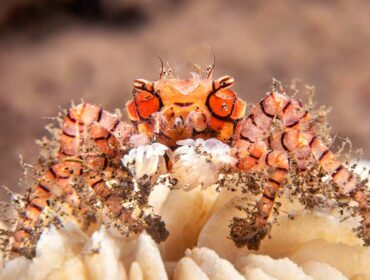The conch is a type of large, herbivorous sea-snail found in tropical marine waters. They are typically found in relatively shallow waters including reef and seagrass habitats, which frequently puts them in the path of SCUBA divers, snorkelers, and hunters.
When most people think of a typical conch, they picture a species called the Queen conch (Lobatus gigas). These snails can each up to 13.9 inches in length, and their large shells provide a microhabitat for other, smaller forms of marine life like tiny crabs, snails, or fish. Interestingly, unlike many other types of snail, L. gigas is not hermaphroditic and females are often slightly larger than males.
Conchs breed during the spring and summer. Breeding is a continuous process; as soon as a female is fertilized and her eggs develop into a jellylike strand called an “egg string,” she will deposit these fertilized eggs in a groove in the sand and search for another male to mate with. These eggs will hatch in approximately a week, at which point the tiny, vegetable-plankton-eating larvae will float to the surface to continue developing. It takes about a month for these larvae to turn into miniature copies of their parents, sink back down to the ocean floor, and begin to develop a soft, rudimentary shell. They can take up to four years to achieve maturity, and scientists estimate that some specimens may be able to achieve a lifespan of up to 40 years.
While these animals are preyed upon by several different species while they are juveniles, including crabs, starfish, fish, sea turtles, and humans, the large, thick shells of adults means that predation becomes much more difficult as the animal matures. Unfortunately, that doesn’t mean that these animals are safe– some areas have seen their native populations decimated by overfishing due to their popularity in food and decor.
The conch is an unusual and fascinating creature that provides an important source of food for other marine life. It’s important for divers not to disturb these creatures when they come across them, and do whatever they can to help protect the reefs that they call home.
Check out this fascinating video that explores the life of the conch from conception to consumption — if it’s not one of the lucky ones!





